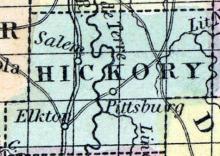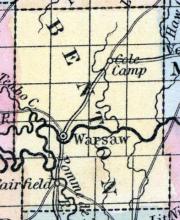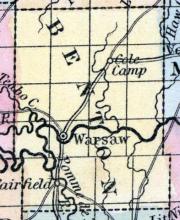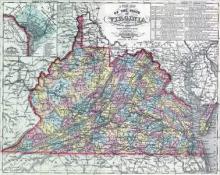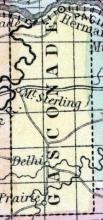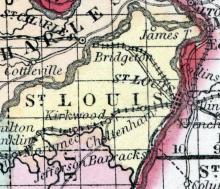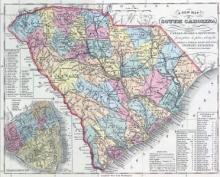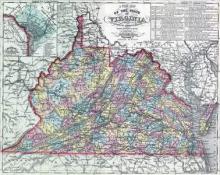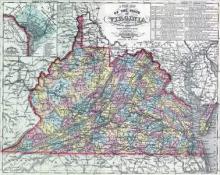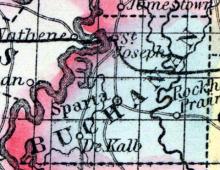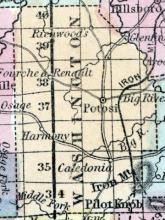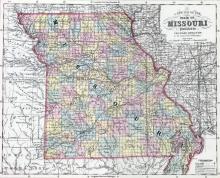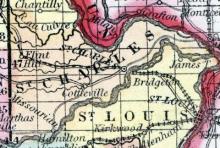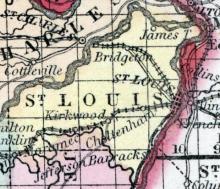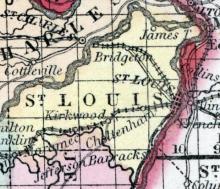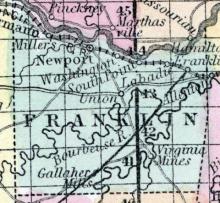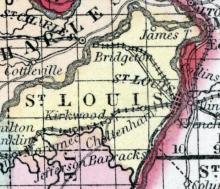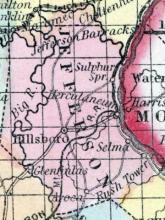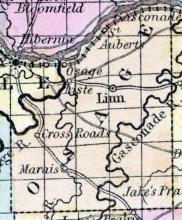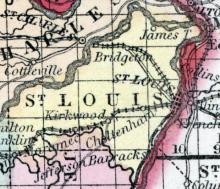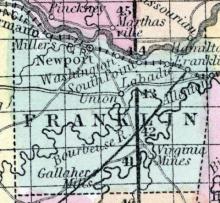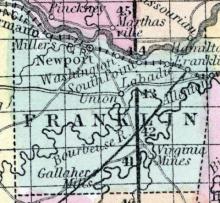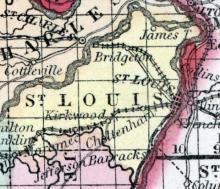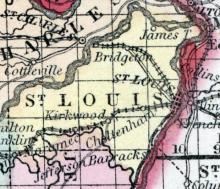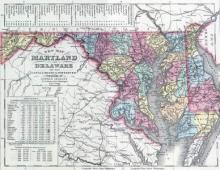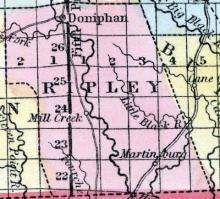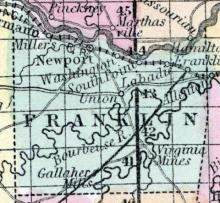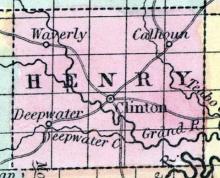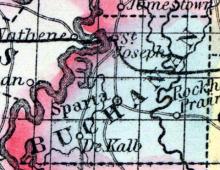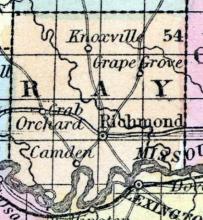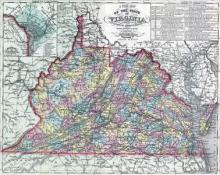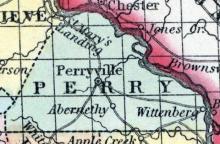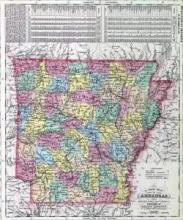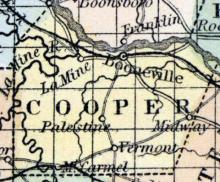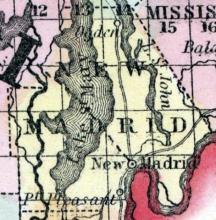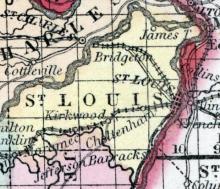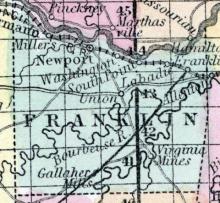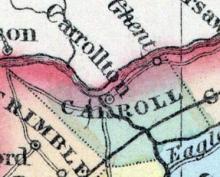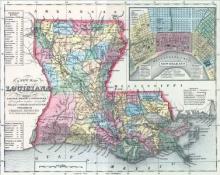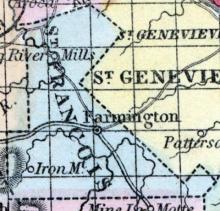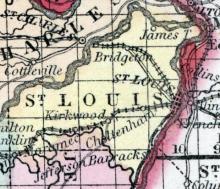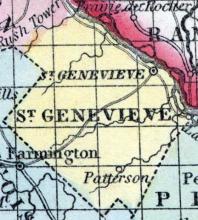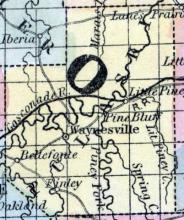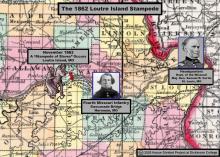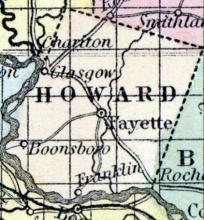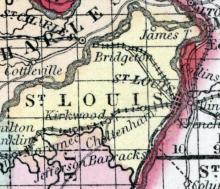A roughly 20-year-old enslaved man named Bob Weaver escaped from Quincy, Missouri. Weaver was recaptured near St. Louis on November 18, 1861. On December 27, Union provost marshal general Bernard Farrar released Weaver under the First Confiscation Act, after determining that his slaveholder had forced him to labor for the Confederate army.
View All Escapes // 1840s // 1850s // 1860s
Displaying 51 - 100 of 126
Two enslaved men, roughly 21-year-old Hardy McElrath (or Mackelrath) and roughly 35-year-old Isaac McElroy (or Mackelrath), escaped from near Warsaw in early November, and were recaptured near St.
Three enslaved men, William Leslie, Albert Leslie and Thomas Jefferson, escaped from Warsaw, Missouri sometime in early November and were arrested near St. Louis on November 18, 1861. On December 27, Union provost marshal general Bernard Farrar released William and Albert Leslie under the First Confiscation Act, after determining that their slaveholder had forced them to labor for the Confederate army.
On Sunday night, November 3, 1861, there was a mass escape "of a party of some forty negroes or more" from several different slaveholders around White Point in Westmoreland County, Virginia. Newspapers in the state blamed "military authorities" for not doing more to protect slave property.
On Monday, November 4, 1861, two enslaved men, 23-year-old Barney and 21-year-old Nelson, escaped from a farm near Morrison Station, along the Pacific Railroad in Gasconade county, Missouri. Their enslaver, A.W. Morrison, advertised a $300 reward for their recapture.
On November 8, 1861, more than 150 enslaved Missourians escaped into the camp of Brig. Gen. Joseph H. Lane's Kansas Brigade. Although Lane allowed slaveholders to search his camp, a reporter for the New York Herald attested that not a single freedom seeker had been recaptured. The 150 freedom seekers from new Springfield and others from elsewhere in western Missouri followed Lane's brigade back into Kansas, arriving on free soil on November 13.
St. Louis county sheriff John Andrews committed 20-year-old Frank Jourdan to the county jail under the presumption that Jourdan was a runaway slave.
Around December 10, 1861, about 18 freedom seekers were apprehended trying to escape from the Norfolk area to Union-controlled Fort Monroe. According to newspaper reports, "The negroes were gathered here preparatory to embarking for Fortress Monroe in a row-boat, the oars of which were carefully muffled, so as to pass our fortifications on the river without arresting the attention of the guards." The same reports claimed that the runaways were "each armed with a Colt's revolver an
In early 1862, a Richmond newspaper warned that the Union invasion of Accomac and Northampton counties along the Delmarva peninsula had provoked "An almost general stampede of slaves on the eastern shore."
In early February 1862, a Richmond newspaper reported there had been "a stampede of negroes from the vicinity of Chuckatuck" in Isle of Wright County --which was not far from Union-occupied positions around Hampton, Norfolk and Fort Monroe on the Virginia peninsula. The newspaper used the story of the stampedes to underscore the need for drafting more local white men into the militia, claiming that the stampede "has made the necessity of these drafts even more apparent than before."
On Thursday, February 6, 1862, an enslaved man named Blunt, around 41-42 years old, escaped from a property five miles east of Hopewell Station in Washington county, Missouri. His enslavers, Theodore and William Hunt, advertised a $100 reward for Blunt's recapture.
In February 1862, between thirty to forty enslaved Missourians escaped from the eastern Missouri counties of Boone, Callaway, St. Charles, and Montgomery. The St. Louis Republican reported on this "stampede of slaves," adding that city police had already been apprised of the names and descriptions of the freedom seekers.
On Monday, February 17, 1862, an enslaved woman named Ann, around 28 years old, escaped from near Augusta in St. Charles county, Missouri. Her enslaver, Daniel Hays, advertised for her return, promising anyone who recaptured Ann would be "liberally paid for their trouble."
A 14-year-old enslaved male child escaped from St. Louis in late February 1862.
On Friday, February 21, 1862, a 14-year-old enslaved child named Pete escaped from St. Louis. His enslaver, N.H. Whitmore, advertised for Pete's recapture.
On Tuesday night, March 18, 1862, a 21-year-old enslaved man, who was not named, escaped from Boles in Franklin county, Missouri on a horse. His enslaver, W.B. Perkins, advertised a $100 reward for his recapture.
A 23-year-old enslaved woman, who was not named, escaped from Bonhomme, southwest of St. Louis, sometime in late March 1862. Her enslaver, Bryant S. Steele, advertised a $50 reward for the woman's recapture.
On Friday, April 4, 1862, three enslaved men, aged 25, 22 and 20, but not named, escaped from Sandy Creek in Jefferson county, Missouri. Their enslaver, Fleming Hensley, advertised a $150 reward for their recapture.
On Wednesday night, April 9, 1862, an enslaved man named Joe escaped from Chamois, Missouri. His enslaver, Benjamin Hull, advertised a $100 reward for Joe's recapture.
On Friday morning, April 11, 1862, a 17-year-old enslaved person named Leity escaped from St. Louis. Her enslaver, C.A. McConkin, advertised a $50 reward for Leity's recapture.
On Sunday, April 20, 1862, two enslaved brothers, Josephus and Anthony, escaped from St. Clair, Missouri. Their enslaver, J.M. Crowder, advertised a $100 reward for their recapture.
On Monday, April 21, 1862, a roughly 40-year-old enslaved man named Greef escaped from Gray Summit in Franklin county, Missouri. His enslaver, James R. Roberts, advertised a $50 reward for Greef's recapture.
On Wednesday, April 23, 1862, a 15-year-old enslaved child named Nettie escaped from the household of slaveholder J.D. Lawrin, on 33 South 4th Street in St. Louis. Lawrin advertised a $25 reward for Nettie's recapture.
Around Thursday, May 1, 1862, an enslaved man and cook named George, between 35-40 years old, escaped from Bonhomme, southwest of St. Louis. George's enslaver, Nimrod Snyder, advertised a $10 reward for George's recapture.
A 30-year-old enslaved blacksmith named Alfred escaped from the farm of William H. Righter in Ripley county, Missouri sometime during May 1862, and was last seen heading northward near Pilot Knob in Iron county. His enslaver, Henry C. Wright, offered a $150 reward for Alfred's recapture.
On Sunday, June 1, 1862, an enslaved man named Will, aged around 16-17 years, escaped from Labadie Station in Franklin county, Missouri. His enslaver, F.J. North, advertised "the usual legal reward" for Will's recapture.
A roughly 21-year-old enslaved man named Labe escaped from slaveholder Reuben Park in Henry county, Missouri, and was recaptured in Clay county in early July 1862.
An enslaved man named Harrison escaped from slaveholder Samuel Hill (he alternatively claimed he was held by Anderson Guthrie and John Mitchel) in St. Joseph, Missouri, and was recaptured in Clay county in early July 1862.
A roughly 50-year-old enslaved man named Jerry escaped from slaveholder E.D. Parsons of Ray county. Jerry was recaptured at Clay county in early July 1862.
Around June 19, 1862, a reported 150 freedom seekers crossed the northern shore of the Rappahannock River near Fredericksburg, Virginia. A Boston newspaper reported, "They are going, going, and will soon be gone. What do secession orators say now? Why don’t they make speeches, delineating the beauties, glories, and excellence of secession? Where is the immovable foundation on which African slavery is based?"
On Saturday, June 21, 1862, two enslaved men, 49-year-old Joe and 22-year-old Anbeeson escaped from a property some six miles south of Miami, Missouri. Their enslaver, N.S. Smith, advertised a "liberal reward" for their recapture. Anbeeson was also identified as a blacksmith.
On Saturday, June 21, a 40-year-old enslaved man named Joseph (also known as Ceck) escaped from Perry county, Missouri. His enslaver, Cassel Abernathy, advertised a "liberal reward" for Joseph's recapture.
In mid-June, the Cecil Whig, a leading eastern Maryland newspaper, shared a brief, but very provocative report from Arkansas. "A slave revolt and stampede is anticipated in Crittenden county, Arkansas, opposite Memphis," claimed the Whig, "and many of the white are fleeing to Memphis for safety." There was no other information provided.
A roughly 24-year-old enslaved man named Jim escaped from Cooper county, Missouri on Sunday, June 22, 1862. His enslaver, A. Byler, advertised a "liberal reward" for Jim's recapture.
A Missouri slaveholder tracked down two escapees, and brought them before U.S. Commissioner Daniel Hannon who remanded them, but U.S. army officials intervened. General William K. Strong discharged the two alleged runaways.
On Saturday night, July 5, 1862, an extended family of five enslaved people escaped from St. Louis: 26-year-old Charles, 18-year-old Patsy, 13-year-old Clara (niece of Charles), 22-year-old Clement (brother of Charles), and a 17-year-old boy named Jule. Charles, Clement and Jule all spoke both English and French. Their enslavers, F.L. Jones and C.F. DeLassus, advertised a $500 reward for their recapture.
On Thursday, July 10, 1862, an enslaved man named Stepney, in his early 30s, escaped from the household of Frederick Stines in Franklin county, Missouri. His enslaver, R.A. King, advertised a $100 reward for Stepney's recapture.
A group of six to seven enslaved people (all but one of whom were men) escaped from farms near Ghent, Kentucky on horseback on Friday night, July 11, 1862. Three miles east of Madison, Indiana, the freedom seekers left their horses to cross the Ohio river by skiff. Two local Black men by the surname of Harris guided the freedom seekers, until slave catchers overtook them around 9pm on Saturday night, July 12.
On Saturday night, July 19, 1862, an enslaved woman named Molinda, around 18 years old, escaped from the residence of slaveholder Ansyel Phillips some four miles outside of St. Louis along the St. Charles road. Phillips advertised a "liberal reward" for Molinda's recapture.
The New Orleans Delta reported that early in the morning on Monday, August 4, 1862, policemen in their city battled with a group of 25 or 30 runaway slaves along St. Ferdinand Street.
On Tuesday, August 12, 1862, a roughly 26-year-old enslaved woman named Julia escaped from Big River mills in St. Francois county, Missouri. Her enslaver, James Ransom, advertised a $50 reward for Julia's recapture.
On Tuesday, August 12, 1862, an enslaved woman named Mourning Geyer, around 42 years in age, escaped from St. Louis with her 21-year-old son Henson. Their enslaver, Charles R. Hall, advertised a $100 reward for their recapture.
Multiple reports citing a Ste. Genevieve newspaper noted a "stampede of negroes" from throughout Ste. Genevieve county during the fall of 1862.
On Tuesday night, October 14, 1862, four enslaved people, 50-year-old Bob, 38-year-old Lewis, 32-year-old Harriet, and 16-year-old George, escaped with four horses from Pulaski county, Missouri. Their enslaver, Wilson Tilly, advertised a $50 reward for their recapture.
In November 1862, a group of enslaved people escaped from Loutre Island and escaped across the Missouri river into Hermann, and made their way behind Union lines. Slaveholders managed to re-arrest four of the freedom seekers, who were later freed by Union authorities.
An enslaved man named Walker, around 17 years old, escaped from Glasgow in Howard county, Missouri in early January 1863. He was recaptured on January 21, 1863 in Putnam county, Missouri.
An enslaved child named Zachariah, around 12 years old, escaped from the home of Walter C. Carr on 131 Chestnut Street in St. Louis. Carr advertised for Zachariah's recapture.

